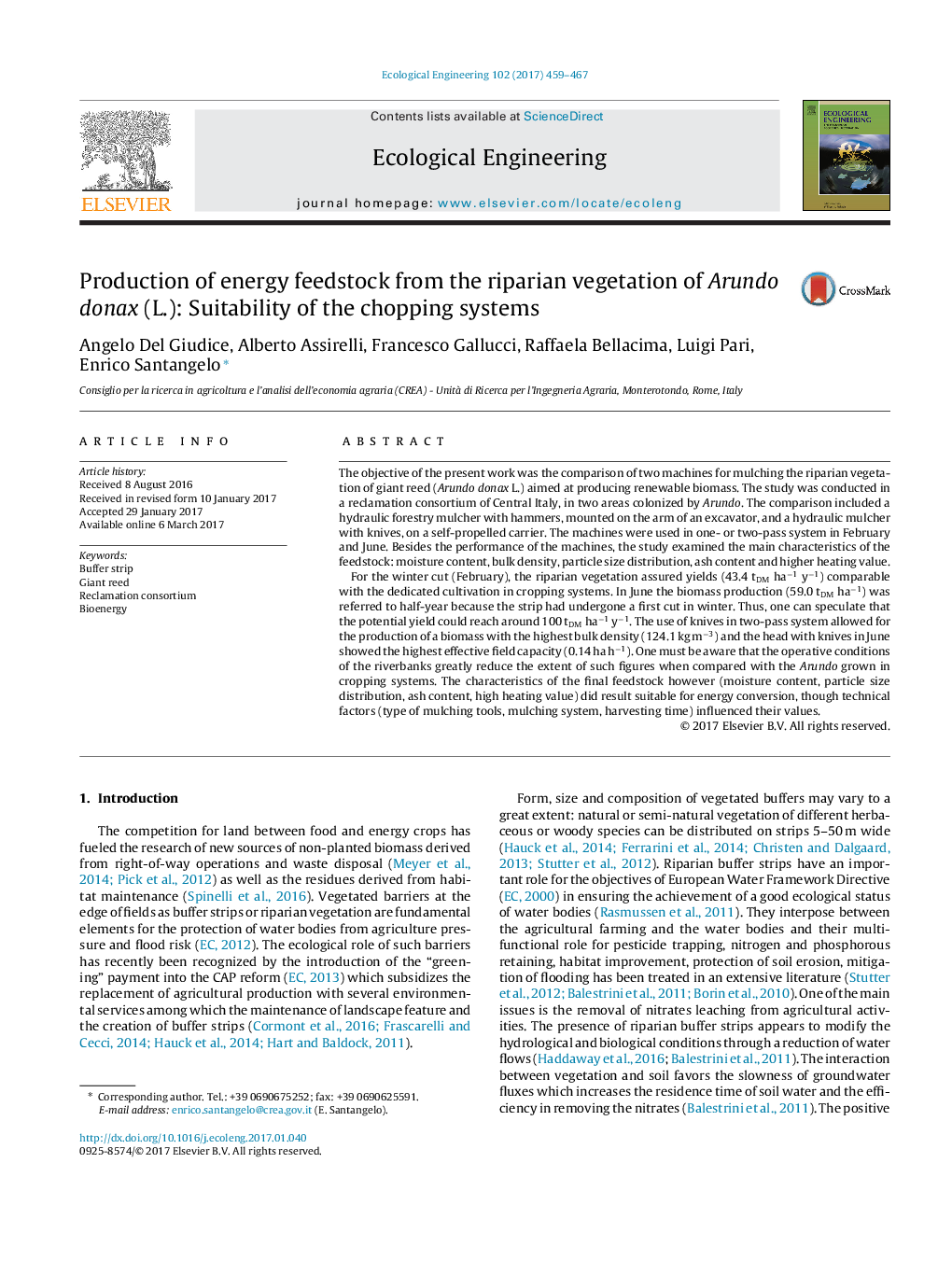| کد مقاله | کد نشریه | سال انتشار | مقاله انگلیسی | نسخه تمام متن |
|---|---|---|---|---|
| 5743791 | 1617997 | 2017 | 9 صفحه PDF | دانلود رایگان |

- The feedstock produced by two mulchers in a reclamation consortium was analyzed.
- Feedstock quality was influenced by mulching tools, system of mulching and harvesting time.
- The product harvested in winter or summer had different characteristics.
- Such biomass could be available for different conversion technologies.
The objective of the present work was the comparison of two machines for mulching the riparian vegetation of giant reed (Arundo donax L.) aimed at producing renewable biomass. The study was conducted in a reclamation consortium of Central Italy, in two areas colonized by Arundo. The comparison included a hydraulic forestry mulcher with hammers, mounted on the arm of an excavator, and a hydraulic mulcher with knives, on a self-propelled carrier. The machines were used in one- or two-pass system in February and June. Besides the performance of the machines, the study examined the main characteristics of the feedstock: moisture content, bulk density, particle size distribution, ash content and higher heating value.For the winter cut (February), the riparian vegetation assured yields (43.4 tDM haâ1 yâ1) comparable with the dedicated cultivation in cropping systems. In June the biomass production (59.0 tDM haâ1) was referred to half-year because the strip had undergone a first cut in winter. Thus, one can speculate that the potential yield could reach around 100 tDM haâ1 yâ1. The use of knives in two-pass system allowed for the production of a biomass with the highest bulk density (124.1 kg mâ3) and the head with knives in June showed the highest effective field capacity (0.14 ha hâ1). One must be aware that the operative conditions of the riverbanks greatly reduce the extent of such figures when compared with the Arundo grown in cropping systems. The characteristics of the final feedstock however (moisture content, particle size distribution, ash content, high heating value) did result suitable for energy conversion, though technical factors (type of mulching tools, mulching system, harvesting time) influenced their values.
Journal: Ecological Engineering - Volume 102, May 2017, Pages 459-467